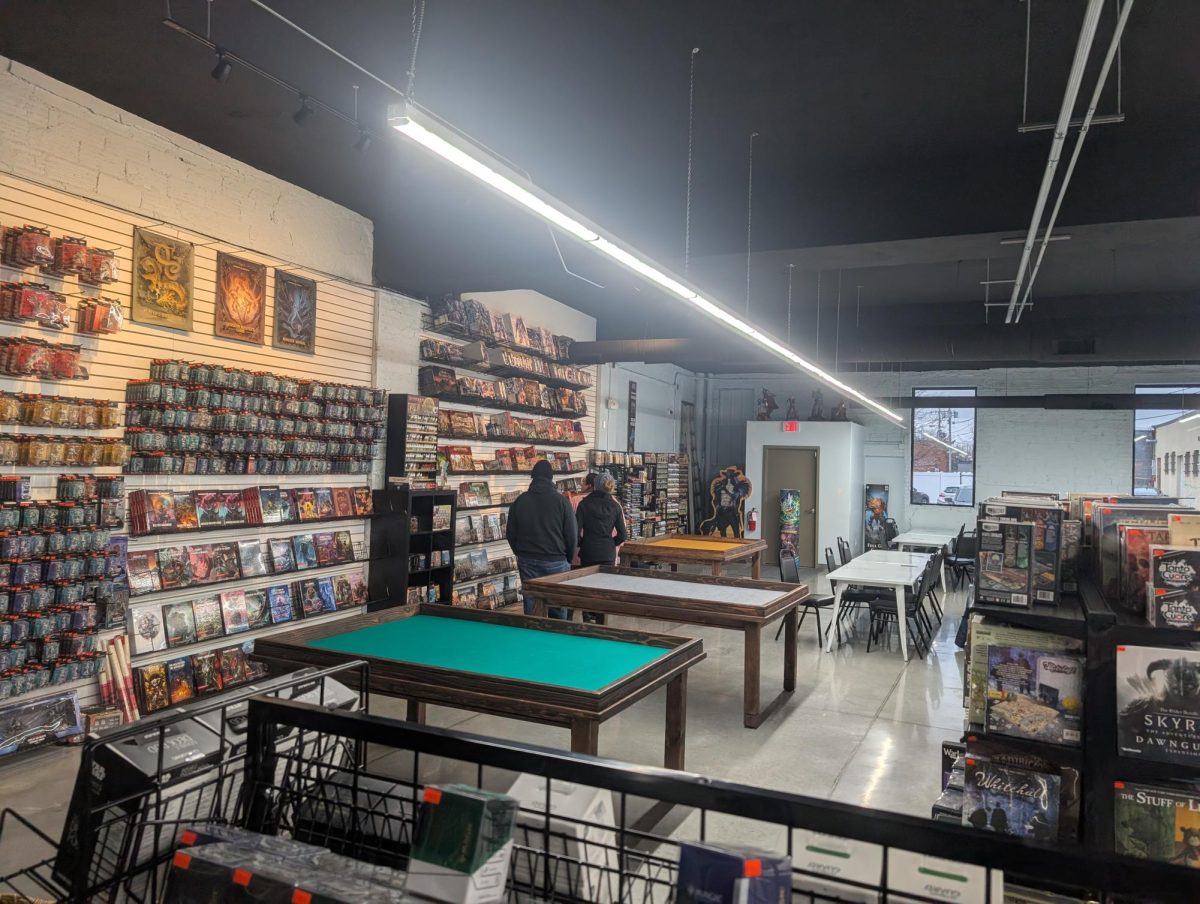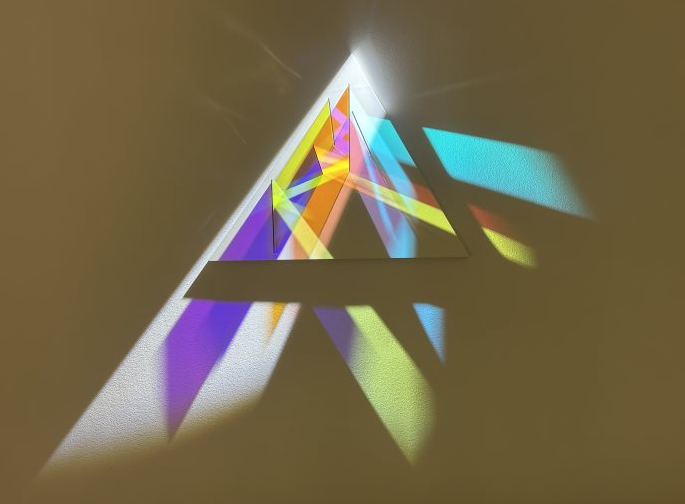By: Brian Palubiak
Many artists may think that design is too structured and not a real art form. On the other hand, many designers think art lacks structure and formal attributes.
So where does fine art and graphic design cross, and where does it divert?
The underlying structure of graphic design and fine art is one and the same. However, graphic designers make art that is commercial, whereas fine artists often make art for personal expression.
Professionals at the University of Akron share their insights, as formed by their specific fields, on the similarities and differences that exist between the two fields.
Chris Hoot, professor of typography
Typography is the art of making type aesthetically pleasing.
According to Hoot, when it comes to comparing design and fine arts, “The principles and elements of design are the same; intentions and audiences differ.”
The difference, according to Hoot, in composing a painting versus composing a layout is minimal.
“Media may differ, but that’s not the case recently since many artists now use digital media,” Hoot said.
A fine arts artists and a graphic designer have much to learn from the other, he said.
“Designers would benefit greatly from getting away from the computer and using traditional media to explore ideas and processes which don’t lock them into a certain look or procedure governed by soft- ware limitations,” Hoot said. “Both artists and designers should draw more to develop ideas and establish relationships between elements. Drawing can also be done on the computer.”
Vlada Vukadinovic, professor of design and illustration
Illustrations can help aid designs and/or journalism articles. Illustrators often use styles and techniques similar to fine artists.
Fine art and Design are both visual disciplines, in that they that share same visual principles and aesthetics.
For Vukadinovic, the main reason design differs from fine arts is that “Fine artists communicate personal opinion, feelings, etc. through work.”
“[A] designer communicates a specific message to a specific audience, often for a client,” Vukadinovic said. “Designers are an integral part of the economy.”
Vukadinovic agrees that composing a painting and composing a layout are very similar. According to Vukadinovic, the difference between the two lies in the message a viewer is meant to take away from a piece. Both compositions are “judged by the same visual principles,” according to Vukadinovic.
Regarding fine artists and graphic designers, Vukadinovic also expresses their interconnectedness.
“Both disciplines inform each other. Painters can design and designers can paint or produce gallery art. Artists with open minds are most successful because they learn from different disciplines. Traditionally in Europe, designers and artists see each other without distinction. They see each other as artists first,” Vukadinovic said.
Mark Soppeland, distinguished professor of Fine Art Painting
Soppeland provided insight from his background in painting.
He sees design and fine art as “vast, complex fields [that] have almost everything in common.” According to Soppeland, both forms of art are based on communication of ideas and emotions through visual means.
Although not always the case, Soppeland said that the main difference between a fine art composition and a design composition is that a design usually is fitted to the desires of a client, while the fine art composition follows the concerns of expression for the artist.
“Both fields use the vast range of tools and materials available today, from traditional to the most cutting-edge technology,” Soppeland said.
Markus Vogl, assistant professor web design and interactive media
Interactive media allows the audience to interact with art and design. Vogl provides some insight into the field of web design and interactive media.
Vogl also highlighted the similarities that exist between the fields of design and fine art.
“Both fields are concerned with design and composition, choice of tools and materials, and the world of ideas,” Vogl said. “There is a tremendous amount that is shared between the two fields, with many individuals functioning in both worlds.”
Between the two fields, most principles are similar, according to Vogl. Both fields follow the same principles of composition, color theory and the relationship between figure and ground.
“Design follows a bit more rigor than art as it tries to objectively serve many,” Vogl said. “Design guides the flow as fluently as possible. Art doesn’t have to necessarily follow these principles; it can be controversial and sometimes purposefully wrong; it can exhibit opinions and be loud.”
“Good design, on the other hand, augments and aides a particular task…elevating this particular task, helping it quietly to grow and sprout.”
According to Vogl, the main difference between the fields concerns the role each plays. The purpose of design is to aid, whereas art should be able to be philosophized.
“Design is very clear in its point, where art can be intentionally vague,” Vogl said.
The art of composition in the two fields, according to Vogl, is essentially the same.
“Shapes, colors, values have to arranged in a pleasant and interesting manner,” Vogl said. “Hierarchy has to be established and the eye needs to be led competently.Typography will come into play when designing for certain aspects, yet the underlying compositional effects still hold true. Of course, the subject matter and the concepts will differ, as the nature of the tasks is inherently different.
What could a fine artist gain from a designer and vice versa? According to Vogl, the two branches of art can easily hybridize.
“Designers generally work with the same principles as artists, especially color theory and composition. As I mentioned, artists can offer freedom, whereas designers can offer discipline,” Vogl said.
In Vogl’s hybrid arts and design Praxis, Vogl says that he is “always confronted with walking a fine line between conceptual play and the rigmarole of the craft.
“Rules are to be followed, yet they are to be broken, leaving me with having to adhere to two sets of measurements rather than one,” Vogl said.
The tension between those two is what drives Vogl.
“My work will always be judged by both the designer and the artist,” Vogl said. “Thinking within both disciplines augments my conceptual visions.”







